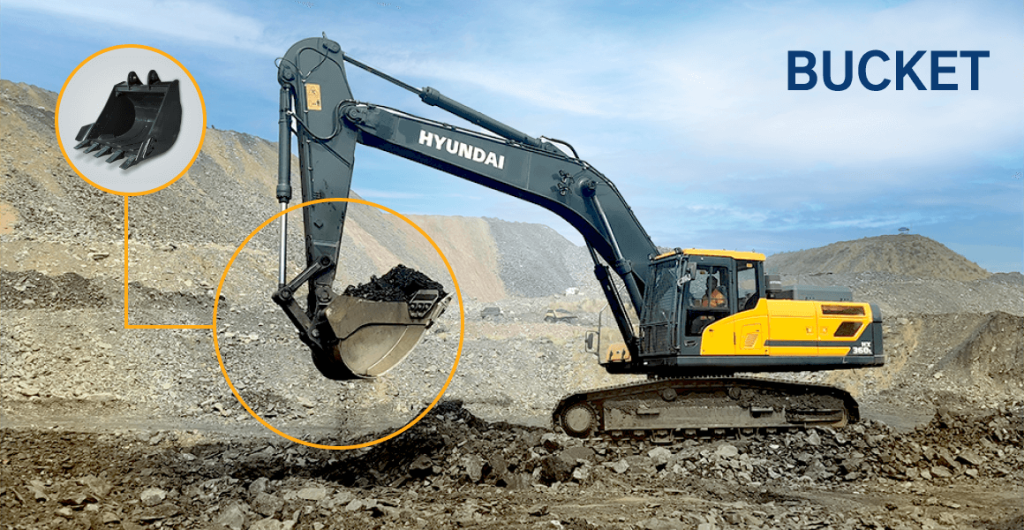The workhorses of the mining and construction sectors, excavators are well-known for their adaptability and effectiveness in a range of settings. But what really makes them more useful are the several attachments that are available, each designed for a particular activity or set of circumstances. Attachments for excavators are adaptable extensions of the machine that allow it to carry out a wide range of operations with maximum accuracy and effectiveness. These attachments have been carefully crafted to meet the diverse demands that arise on construction sites, where adaptability and efficiency are essential for the effective completion of projects.
We’ll examine the wide types of excavator attachments, their significance, and the varied kinds that meet distinct demands in this in-depth study.
Importance of Using Excavator Attachments
Excavator attachments enhance productivity, efficiency, and versatility on construction sites. These attachments, ranging from buckets and breakers to couplers and grapples, offer specialised functionalities that empower operators to accomplish tasks with precision and ease.
The capacity of an excavator attachment to optimize operations is one of its main advantages. Operators can maximize productivity and minimize downtime by choosing the right attachment for the particular activity at hand. When compared to utilizing a regular bucket alone, operators can accomplish jobs more quickly when they use a trenching bucket for trench digging or a hydraulic hammer for cracking concrete.
These attachments are vital equipment that enable operators to perform their jobs more successfully and efficiently. Operators can avoid the need for extra machinery, reduce manual effort, and expedite operations by selecting the appropriate attachment for the job. This maximizes the use of excavators, who become invaluable resources in any building project and saves time and money as well.
Types of Excavator Attachments
- Excavator Bucket
- Hydraulic Breaker
- Hydraulic Quick Coupler
- Excavator Auger
- Excavator Ripper
- Hydraulic Magnet
- Excavator Grapple
- Excavator Fork
- Hydraulic Shear
Excavator Bucket

Excavator buckets are the most common attachments for excavators, available in various sizes and shapes to suit different applications. General-purpose buckets are ideal for digging and loading operations, while rock buckets are designed explicitly for handling rigid materials such as stone and concrete.
Hydraulic Breaker
Hydraulic breakers, also known as hydraulic hammers, are used for breaking up concrete, rock, and other hard materials. They are essential for demolition, quarrying, and road construction projects, providing efficient and precise braking capabilities.
Hydraulic Quick Coupler

Hydraulic quick couplers allow for the rapid interchange of attachments, eliminating the need for manual pin swapping. They improve operational efficiency by enabling operators to switch between buckets, breakers, and other tools quickly and easily.
Excavator Auger
Excavator augers are used to drill holes in the ground for various purposes, including installing fence posts, foundations, and utility poles. They come in different sizes and configurations to accommodate different soil types and drilling requirements, providing precise and efficient hole-drilling capabilities.
Excavator Ripper
Excavator rippers are specialised attachments used for breaking up hard-packed soil, asphalt, and frozen ground. They feature solid and pointed tines that penetrate the surface and loosen compacted materials, making them essential tools for excavation, grading, and site preparation tasks.
Hydraulic Magnet
The hydraulic magnet is an attachment that can be mounted on the end of an excavator’s boom or stick. It uses powerful electromagnets to lift and move ferrous metal objects, such as scrap metal, reinforcing bars, and other heavy metal debris. Hydraulic magnets enable efficient and safe handling of metallic materials, making them valuable for demolition, recycling, and material handling tasks.
Excavator Grapple
The excavator grapple is a claw-like attachment that can be used with excavators to grip and manipulate various materials, such as logs, debris, and bulky objects. Grapples feature powerful hydraulic jaws that can firmly grasp and move these materials, allowing the excavator to perform tasks like loading, unloading, and material sorting. Excavator grapples are particularly useful in forestry, demolition, and waste management applications.
Excavator Fork
The excavator fork is a specialized attachment that resembles a forklift’s tines, but is designed to be used with an excavator. These forks allow the excavator to lift, move, and transport palletized or similar materials, expanding the machine’s capabilities beyond just digging and earthmoving. Excavator forks are often used in material handling, warehouse operations, and construction sites where the need for material transportation arises.
Hydraulic Shear
The hydraulic shear is a powerful attachment that can be mounted on an excavator’s boom or stick.
It features a set of high-strength, hydraulically-operated blades that can effectively cut through thick metal materials, such as steel beams, car bodies, and scrap metal. Hydraulic shears are invaluable in demolition and recycling applications, allowing excavators to efficiently break down and process large, heavy metal objects.